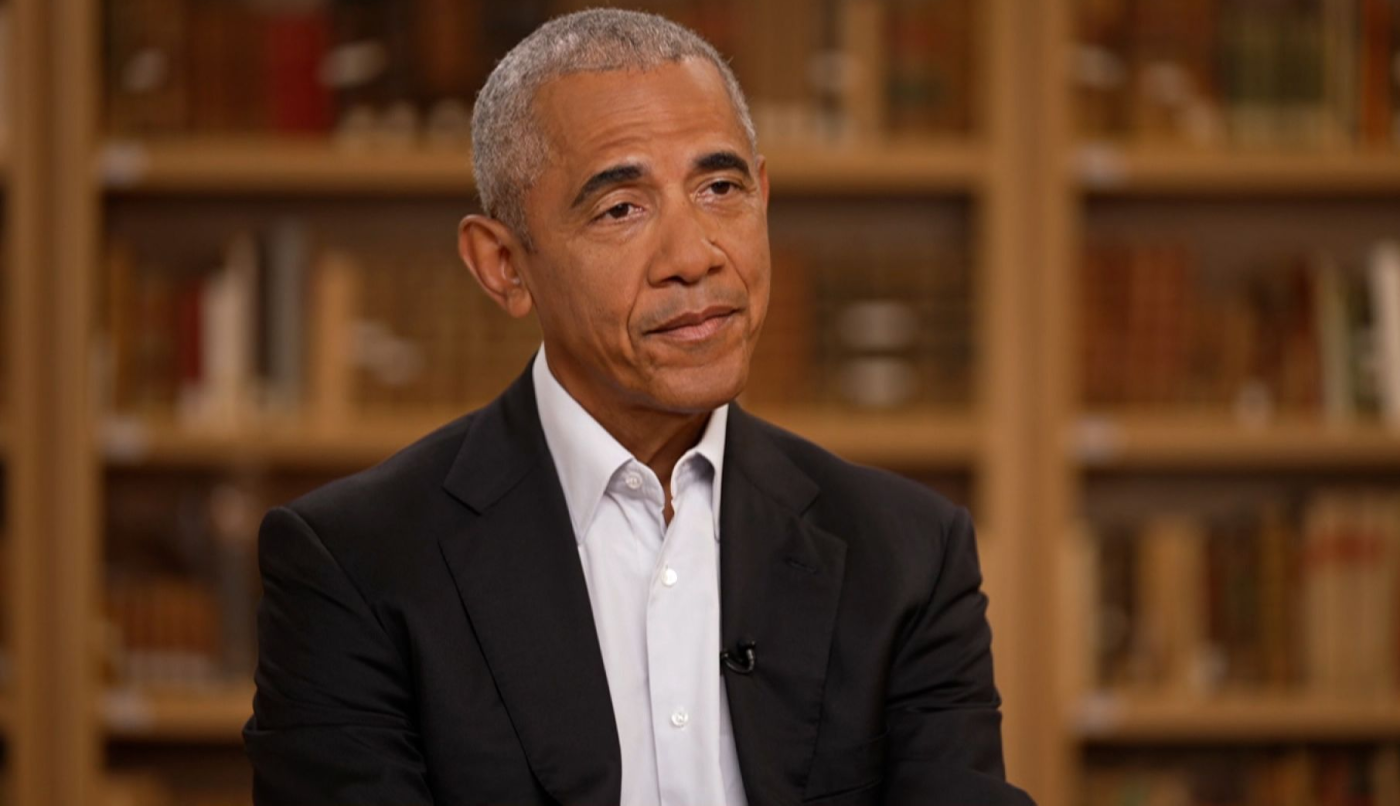The 2024 U.S. presidential election has delivered a blow to the Democratic Party, as former President Barack Obama’s influence, once seen as a guiding force for the party, appears to be waning. With Donald Trump securing a decisive victory in both the Electoral College and the popular vote, the Democratic Party finds itself at a crossroads, reeling from a setback that has forced many to question their leadership and the strategies that once propelled them forward. As the dust settles from the election results, the question remains: Can the Democratic Party reinvent itself, or is it doomed to remain stuck in the past?
Obama’s endorsement of Kamala Harris during her 2024 presidential run highlighted his continued prominence in the party. His message urged voters to view the election as a test of character and conviction, rather than simply focusing on policy issues. However, the outcome of the election told a different story, with Trump’s overwhelming victory indicating that voters were seeking something different than the leadership Obama represented. In this article, we’ll take a deep dive into the current state of the Democratic Party, the shifting political landscape, and what the future holds as the party searches for a new direction.
The Wake of the 2024 Election: A Clear Message from the Electorate
The 2024 election was a wake-up call for many within the Democratic Party. Not only did Donald Trump secure a commanding victory in the Electoral College, with 312 votes to Harris’s 226, but his popular vote win marked a decisive shift in the political landscape. Trump became the first Republican since George W. Bush in 2004 to secure the popular vote by nearly three million votes. This victory sent a clear message to the Democratic Party that its approach was no longer resonating with a significant portion of the American electorate.
For years, Obama had been the face of the Democratic Party, shaping its policies, defining its strategies, and guiding it through numerous elections. His popularity had been a strong foundation for the party’s vision, especially after his historic two terms in office. However, the 2024 defeat exposed cracks in the Democratic establishment, revealing that the same tactics and leadership styles that once worked might no longer be effective in an era defined by a shifting electorate and a transformed political environment.
Obama’s Legacy: From Political Powerhouse to Fading Influence
Obama’s legacy as a politician is hard to deny. From his groundbreaking presidential campaigns to his two terms in office, he achieved numerous successes that reshaped American politics. He helped push through landmark legislation, including the Affordable Care Act, which expanded healthcare access to millions. Obama also played a critical role in navigating the country through the 2008 financial crisis, earning respect from political allies and adversaries alike.
However, the post-presidency years have been less kind to Obama’s influence within the Democratic Party. As Trump’s political influence continued to grow, the power of Obama’s endorsements and leadership began to erode. The 2024 election loss only amplified this shift, signaling that the electorate was increasingly seeking new leadership. Obama’s strategies, though groundbreaking at the time, seemed out of step with the demands of a new generation of voters who were looking for change and innovation.
The Democratic Party’s Crisis: Is It Time for a Change in Leadership?
As the 2024 election results poured in, many Democrats began to ask themselves: Is it time for new leadership? The strategies that had once worked so well under Obama’s guidance appeared to be faltering in the face of Trump’s growing appeal. And with the loss of the presidency, control of Congress, and the ascendancy of Trump’s political movement, the party is now grappling with an identity crisis.
A faction within the Democratic Party is calling for a complete restructuring of the party’s leadership and vision. This shift is driven by a belief that the party needs fresh voices to lead it forward. Many Democratic voters have grown disillusioned with the status quo and feel that the party needs to redefine itself in order to compete with a Republican Party that has been reshaped by Trump’s influence. The election results showed that the Democratic establishment, rooted in traditional policies, could no longer maintain its grip on power. It was clear that the party needed to move in a new direction.
New Voices, New Vision
As the Democratic Party licks its wounds and reassesses its future, many see the path forward as one that must involve new voices and fresh leadership. No longer can the party rely on the strategies of past leaders like Obama, who was an undeniable force during his presidency. With the party’s future uncertain, some of the more promising Democratic governors have formed a coalition to address the growing concerns.
The coalition, known as Governors Safeguarding Democracy, is composed of rising stars within the party who are positioning themselves as the future of the Democratic Party. These governors have taken it upon themselves to offer a strong opposition to Trump’s growing influence and to create a new political agenda that resonates with voters. Many believe that the 2028 presidential race will be a crucial moment for the party’s leadership, and the new generation of Democrats must chart a course that appeals to the needs and priorities of the electorate.
Former Homeland Security Secretary Jeh Johnson has emerged as one of the most vocal figures in the push for change within the party. He has emphasized the need for innovation and a departure from nostalgic thinking. In his remarks, Johnson has stressed that the Democratic Party must focus on future success, not past triumphs. “We cannot simply reach back to our glory days and expect victory,” he said. “The party must evolve if it wants to remain relevant in the years to come.”
The Democratic Party’s Dilemma: Hold On to the Past or Embrace the Future?
As the party faces a crossroads, it must decide whether to continue clinging to its past successes or embrace a new, bold direction. The 2024 election exposed deep divisions within the party, and the loss has forced Democrats to reconsider how they connect with voters and adapt to a rapidly changing political environment. The party can no longer afford to simply rely on past leaders and outdated strategies.
For some, this means a shift away from the traditional power structures and a move toward a more inclusive and diverse vision for the future. Whether this involves embracing more moderate policies, redefining the party’s message, or selecting new leadership altogether, it’s clear that the current state of the Democratic Party cannot stand still.
The Road Ahead: Rebuilding the Democratic Party
The 2026 midterms and the 2028 presidential race will be pivotal for the Democratic Party. The next few years will determine whether the party can rebuild and reposition itself to challenge the Republican stronghold that Trump’s influence has solidified. The challenge for the Democrats is clear: they must connect with voters who felt alienated by their message in the 2024 election and offer a new vision for the future.
The road ahead will be fraught with challenges, but it also presents an opportunity for the party to innovate and evolve. If Democrats are able to tap into the changing needs of the electorate and find fresh leadership, they may be able to reclaim power in future elections. However, if they continue to cling to outdated strategies and leaders, the party risks becoming irrelevant in a political landscape that is increasingly shaped by the forces of change.
Conclusion: Will the Democrats Adapt, or Will Trump’s Victory Reshape American Politics?
The 2024 election and its aftermath have exposed a number of hard truths for the Democratic Party. Obama’s influence, once seen as a unifying force, has begun to fade, and the party now faces a critical juncture. Will the Democrats embrace change and fresh leadership, or will they remain tethered to the past? As the political landscape continues to shift, the party’s future will be shaped by its ability to adapt, innovate, and find new leaders who can unite the electorate and challenge the Republican dominance that Trump has helped solidify.
The next few years will be critical for the Democratic Party, and the decisions made today will impact the direction of American politics for years to come. Whether the party can rebuild and find a new path forward remains to be seen, but one thing is certain—the coming elections will determine if the Democrats can overcome this setback or if Trump’s legacy has permanently reshaped the political balance of power.

